
Maximize Shopify Customer Retention for Repeat Sales
If you’re a Shopify retailer seeking strategies to enhance customer retention & maximize repeat sales, then you’re in the right place.
Boost customer experience and reduce support tickets
Realtime order and shipment tracking
Proactive order and shipping notifications
Predictive pre-purchase estimated delivery dates
Self-Serivce branded order tracking
Effortless experience delivered
Make returns profitable and delight customers
Flexibility to define any return destinations & conditions
Simplify returns for your customers and team
Incentivize exchanges over returns
Returns management made easy for your team
Understand why your customers are returning
Unify the online and the in-store experience
Hassle-free pickup experience for customers
In-Store Dashboard to keep operations streamlined
In-Store and Online orders unified
Drive foot-traffic to your stores
Boost customer experience and reduce support tickets
Realtime order and shipment tracking
Proactive order and shipping notifications
Predictive pre-purchase estimated delivery dates
Self-Serivce branded order tracking
Effortless experience delivered
Make returns profitable and delight customers
Flexibility to define any return destinations & conditions
Simplify returns for your customers and team
Incentivize exchanges over returns
Returns management made easy for your team
Understand why your customers are returning
Unify the online and the in-store experience
Hassle-free pickup experience for customers
In-Store Dashboard to keep operations streamlined
In-Store and Online orders unified
Drive foot-traffic to your stores
Find the answer to all your questions
Explore the most comon questions about WeSupply
Calculate the ROI that WeSupply can bring you
Request a no strings attached review of your current shopping experience and missed conversion opportunities
Take a step by step trip through our functionality to see how we can improve your ecommerce processes.
Read actionable articles on how to optimize your post-purchase experience and decrease support tickets
Get inspired by stories of how our customers implemented an effortless post-purchase experience
A Deep Dive into Top Companies' Order Tracking & Returns Strategy
Wondering if WeSupply is a good fit for you? Read through our use cases to see how we can help you increase conversion & improve CX!

The world of ecommerce is a complex web of purchases, deliveries, and inevitably, returns. Yet, within this intricate network lies a goldmine of opportunity. Returns data, often viewed as a negative aspect of the business, actually possesses a wealth of information that can be used to enhance customer lifetime value (CLV). By viewing each return as an opportunity to engage and retain customers, businesses can tap into this potential and transform their approach to customer retention. This comprehensive guide will delve into the strategies and techniques that can be used to leverage returns data, enhance the returns experience, and ultimately, increase customer lifetime value ecommerce returns.
Returns data offers critical insights for improving Customer Lifetime Value (CLV) by highlighting customer preferences and satisfaction levels, which can inform strategies to boost retention over acquisition for greater profitability.
Viewing the returns process as an opportunity for customer engagement and service can foster loyalty and encourage repeat purchases, contributing to increased CLV by creating positive customer experiences even during returns.
Efficient, transparent, and convenient returns processes, supported by customer-friendly policies and technology, enhance customer satisfaction and loyalty, thereby increasing the likelihood of repeat business and improving CLV.
WeSupply is revolutionizing eCommerce by leveraging returns data to enhance overall customer satisfaction and increase CLV. Its analytics identify specific reasons behind product returns, enabling targeted improvements. Proactive communication through emails and SMS, combined with CSAT and NPS tracking, keeps customers engaged and informed, reducing churn rates. Seamlessly integrating with existing eCommerce systems, WeSupply not only streamlines the returns process but also transforms it into a strategic tool for business growth and customer retention. Boost your eCommerce success today – Get started with WeSupply and transform your returns process into a winning strategy!
To leverage returns data effectively, a solid grasp of Customer Lifetime Value (CLV) is essential. CLV, in the context of ecommerce, represents the anticipated monetary worth of a customer over the course of their association with a brand. It denotes the aggregate sum of money a customer is projected to expend with a business over their lifetime. So, increasing customer lifetime is a crucial aspect of ecommerce businesses.
So, where does returns data come into play? Returns data can impact CLV by offering insights into customer preferences and satisfaction levels. Each return contains valuable information about what existing customers are likely to do in terms of repeat purchases, and how these actions contribute to their overall monetary contribution over time. Analyzing this information can provide a wealth of insights into enhancing CLV.
Prioritizing customer retention over acquisition is a key factor in CLV improvement. This is because it can cost four to five times more to acquire new customers compared to retaining existing ones. In addition, a small 5% boost in customer retention has the potential to generate a significant 25-95% rise in company revenue. This highlights the crucial impact of retaining customers for businesses. As repeat customers are generally more profitable and contribute to long-term growth, retention becomes a crucial strategy in enhancing CLV.
The role of returns data in boosting CLV is significant. By providing valuable insights into customer behavior and preferences, this data can be utilized to optimize marketing strategies, improve customer satisfaction, and ultimately, increase customer lifetime value. This makes returns data an invaluable resource for any ecommerce business looking to improve their bottom line.
Over time, harnessing returns data can markedly enhance customer lifetime value (CLV), resulting in heightened customer engagement, repeat patronage, and more lucrative customers. Therefore, it is vital for ecommerce businesses to recognize the potential of returns data and utilize it effectively to increase customer satisfaction, improve customer retention, and ultimately, increase customer lifetime.
WeSupply harnesses returns data to enhance Customer Lifetime Value (CLV). By examining returns by region and reasons, it offers insights into customer preferences, aiding in optimizing products and policies to boost profit margins. Identifying frequently exchanged items and gathering customer feedback sheds light on the financial impact of returns. WeSupply’s strategy focuses on understanding product return patterns and serial returners, providing actionable insights to reduce return rates and significantly improve CLV.
Customer engagement plays a pivotal role in boosting CLV. Therefore, each return should be viewed as an opportunity to engage with customers and address their concerns. The returns process is not just about refunding money or exchanging products. It’s an opportunity to leave a lasting impression on the customer, to demonstrate that the business values their feedback and strives to provide a seamless shopping experience.
Addressing customer concerns during the returns process contributes to increased customer lifetime value by enhancing customer experiences, fostering loyalty, and improving customer satisfaction. A successful return process leaves the customer feeling valued and appreciated, which in turn increases their likelihood of making repeat purchases and becoming a loyal customer.
Maintaining effective communication with customers throughout the returns process is also vital. Informing customers that they will receive a refund promptly can go a long way in building trust and increasing customer satisfaction. This is especially important in an ecommerce business, where customers cannot physically interact with the products before purchasing.
A well-managed returns process can:
Turn potentially negative experiences into positive ones
Create opportunities for businesses to engage with their customers
Address their concerns
Build long-lasting relationships
By viewing each return as an opportunity rather than a loss, businesses can foster stronger customer relationships and increase customer loyalty.
Ultimately, transforming returns into opportunities is an effective strategy for increasing customer lifetime value. With the right approach, each return can be a stepping stone towards building a strong customer relationship and enhancing customer loyalty.
WeSupply is revolutionizing the returns process, transforming each return into a customer engagement and retention opportunity. Key features include:
Personalized Post-Purchase Notification:
Proactive return notifications keep customers informed.
Custom offers via emails and SMS to encourage repeat business.
Eliminate the need for customers to make “check-up” calls.
Versatile exchange options: any product, same or different value items.
Instant store credit incentivizes exchanges, boosting average order value.
Automated refunds in the form of store credit, gift cards, or coupon codes to foster customer loyalty.
These strategies not only save sales but also enhance the customer experience, effectively increasing Customer Lifetime Value (CLV). The seamless exchange process, akin to shopping on the website, with options like store credit or gift cards as partial payments, further increases order values and reinforces customer satisfaction. Ready to transform your returns process? Book a demo with WeSupply and discover how easy and profitable managing returns can be!
Evereve’s adoption of WeSupply’s technology significantly transformed its approach to handling high order and return rates in fashion retail. Integrating with platforms like Zendesk, Celerant, and Veeqo, they automated and centralized their returns process. This shift not only led to cost savings and reduced customer service workload but also enhanced customer satisfaction and loyalty through a self-service returns system. The case study illustrates how Evereve turned returns into growth opportunities, making it a valuable read for those seeking to improve returns management. Discover how Evereve transformed challenges into opportunities with WeSupply, Read the full case study now!
Creating a seamless returns experience goes beyond simplifying the process for the customer. It’s also about ensuring that the process is efficient, transparent, and customer-friendly. A smooth returns process contributes to higher customer satisfaction and loyalty, which in turn can lead to an increase in the average purchase value over time.
Businesses can ensure a seamless returns process by:
Clearly articulating their returns policies
Maintaining easily accessible and accommodating customer service representatives
Offering complimentary returns and exchanges
Utilizing technology and automation
This is particularly important for retaining existing customers, including the existing customers, and encouraging repeat purchases.
Developing a user-friendly returns interface is also essential in e-commerce. Best practices for developing such an interface include:
Consistently evaluating and improving the returns process according to customer feedback and industry best practices
Transparently communicating return policies on the website
Offering convenient self-service options for returns
Comprehensive return instructions can significantly improve the customer return experience. Detailed instructions provide clarity and simplicity, making the returns process more accessible for customers. By including a mailing label or shipping label with the return instructions, businesses can further enhance convenience for customers, potentially increasing the average order value in the long run.
Providing excellent customer service during the returns process further enhances the overall customer experience. Customer service representatives should be well-trained in handling returns, empathizing with customers, and providing solutions. They should also be familiar with the company’s return policies and procedures to provide accurate and helpful information to customers.
WeSupply offers a seamless returns experience that prioritizes convenience and customer satisfaction. Key features include:
Self-Service Returns: Empower customers with an easy 3-step return process, including the option to return online purchases to physical stores, coupled with support for manual review by customer service.
Flexible Return Rules: Implement smart, customizable return rules that adapt to various item attributes, allowing for free return shipping and efficient sorting of physical returns.
Automated QR Code Return Labels: Simplify the return process with QR code labels, eliminating the need for printing and expediting the return process.
Real-Time Returns Tracking: Enhance customer trust with real-time tracking of returns, providing clear communication and reducing post-purchase anxiety.
Seamless Integration: WeSupply integrates with a myriad of third-party tools, ensuring smooth connectivity with existing API-driven systems, improving customer experience, and optimizing cost-effectiveness.
These features collectively craft a customer-friendly returns process, transforming reverse logistics into a valuable aspect of eCommerce business.
Providing exceptional customer service during the returns process is a key strategy in retaining customers and enhancing customer lifetime value. When customers feel valued and appreciated, they are more likely to become loyal customers and make repeat purchases.
Enhancing the returns process also contributes to customer relationship management. This can be achieved by ensuring a streamlined returns experience that promotes ongoing satisfaction and loyalty. For example, WeSupply has successfully nurtured positive customer relationships by focusing on enhancing the returns process.
Effective communication plays a crucial role in the customer service experience during returns. It facilitates understanding of customer needs, contributes to higher satisfaction levels, and fosters customer loyalty for repeat business.
Fundamentally, offering excellent customer service during the returns process involves comprehending the customer’s needs, addressing their concerns, and delivering solutions. It’s about making the customer feel valued and appreciated, and ensuring that their return experience is as smooth and hassle-free as possible.
Combat inconvenience with proactivity & self service
Book a quick call with our experts to see how WeSupply can help you make returns easy for your customers with a beautiful, self-service solution that makes their experience easier while also providing new ways to lower costs and earn back revenue.
In the modern digital era, technology is pivotal in making the returns process more efficient. From Returns Management Software to automation tools, technology can significantly enhance the efficiency of returns, reduce errors, and improve the overall customer experience.
Automation, in particular, can enhance efficiency by streamlining returns management, reducing labor costs, and ultimately bolstering the overall profitability of the eCommerce store. By automating tasks and speeding up processing, businesses can ensure a smooth and hassle-free returns experience for their customers.
Several effective return management systems are available in the market today, including:
Loop Returns
ReturnLogic
Narvar
AfterShip
These systems can integrate shipping, track return shipments, and provide a seamless, environmentally friendly solution for returns management.
The utilization of technology in product returns also improves the overall customer experience. It provides seamless, environmentally friendly solutions, reduces costs, and enhances efficiency in the returns process. By leveraging technology, businesses can offer a convenient and user-friendly returns experience, thereby enhancing customer satisfaction and loyalty.
Following a product return by a customer, businesses can employ various strategies to cultivate brand loyalty. Some of the most effective strategies include:
Soliciting customer feedback
Celebrating loyal customers on social media
Incentivizing repeat business with reward programs
Using rewards programs
These strategies can help businesses build stronger relationships with their customers and encourage them to continue supporting the brand.
A loyalty rewards program can be particularly effective in improving brand loyalty following a return. This type of program provides incentives such as special discounts, sales, or complimentary goods or services, which can motivate customers to revisit the retailer and develop into repeat customers.
Several brands have been successful in cultivating customer loyalty through their returns policies. For example, Costco and Starbucks have both introduced customer loyalty initiatives aimed at improving customer retention and decreasing churn.
Customer satisfaction also plays a significant role in cultivating brand loyalty after product returns. Satisfied customers are more likely to repurchase, develop trust in the brand, and engage in repeat purchases. Therefore, ensuring customer satisfaction during the returns process is crucial in fostering brand loyalty.
Another pivotal strategy in harnessing returns data to bolster CLV is the analysis and segmentation of customer data. By gaining insights into return patterns and behaviors, businesses can optimize their marketing strategies, improve customer retention, and deliver personalized experiences that result in enhanced customer loyalty.
The most effective approaches for examining customer return data involve analyzing customer returns behavior to identify areas for improvement, focusing on reducing return rates, and enhancing customer loyalty. Tracking key metrics such as customer retention rate, repeat purchase rate, customer churn rate, and customer lifetime value can provide valuable insights into customer behavior and preferences.
Analyzing returns management can help businesses:
Discern patterns in returns
Develop tactics to optimize their returns process
Leverage customer data to personalize their returns experience
Customize their promotional communications and suggestions
Enhance customer interaction and allegiance
Gathering and managing customer return data is also crucial for businesses. Optimal methods for doing so include:
Conducting customer surveys at various points in the customer journey
Obtaining explicit consent
Ensuring transparency
Utilizing secure storage
Prioritizing data security
WeSupply’s Return Analytics and CSAT/NPS tracking offer crucial insights into customer return behaviors and satisfaction in eCommerce. These tools help identify the most frequently returned products and the reasons behind these returns, aiding in understanding customer preferences. Additionally, they assist in recognizing patterns of serial returners, facilitating strategies to reduce return rates. This data-driven approach empowers businesses to continuously improve their processes and product offerings, enhancing customer satisfaction and loyalty, and ultimately fostering a better post-purchase experience.
For any ecommerce business, maintaining a balance in the economics of returns is a complex yet vital task. This involves managing return costs, balancing customer acquisition and retention efforts, and optimizing CLV and churn rates. The typical expenditure associated with a product return in the retail industry is approximately 66% of the original item’s price. This highlights the significant impact returns can have on a business’s bottom line.
To manage these costs and balance acquisition and retention, businesses can:
Increase customer retention and lower churn
Add value to keep customers happy and engaged
Implement a referral program
Optimize conversion rates
Focus acquisition efforts on the most valuable customer segments.
Returns also have a significant impact on CLV and churn rates. It is estimated that up to a third of all ecommerce purchases result in a return, indicating that about 30% of sales may result in refunds or exchanges. However, by effectively managing returns, businesses can retain loyal customers, who tend to have a higher CLV and are more likely to make repeat purchases.
WeSupply stands out in the eCommerce space with its exceptional Returns & Exchanges functionalities, expertly balancing the economics of returns. By effectively managing return costs, it strikes a perfect harmony between customer acquisition and retention, while significantly enhancing Customer Lifetime Value (CLV) and reducing churn rates. This results in a substantial return on investment (ROI) for businesses, optimizing both cost efficiency and customer satisfaction. To see the financial impact on your business, explore the potential with WeSupply’s ROI Calculator.
Post-purchase communication stands out as one of the most efficient methods to stimulate customer engagement. This can include follow-up emails, surveys, and personalized recommendations. Post-purchase communication not only provides an opportunity for businesses to thank their customers, but it also allows them to gather valuable feedback and engage in a dialogue with their customers.
Post-purchase surveys are particularly effective in fostering customer engagement. These surveys can collect valuable feedback on various aspects of the customer journey, including:
The customer’s purchasing experience
Product interaction
Shopping habits
Preferences
Dislikes
This feedback can then be used to address challenges and improve the customer’s overall experience.
Businesses can also stimulate future purchases following a product return by determining their business objectives, identifying the target audience, choosing the right incentives, personalizing the offer, and tracking and measuring the results. This approach can help businesses acquire new customers, motivate existing customers to make new purchases, boost order size or frequency, enhance customer loyalty and retention, and gather valuable consumer data.
Post-return engagement strategies, including referral programs, loyalty programs, and re-engagement campaigns, can also play a significant role in elevating CLV. These initiatives promote repeat purchases, enhance customer satisfaction, and cultivate enduring customer loyalty.
WeSupply enhances customer engagement through proactive post-purchase communication. By leveraging the high open rates of email and SMS notifications, WeSupply keeps customers informed with timely return shipping updates and personalized offers. This approach not only keeps customers in the loop but also eliminates the need for follow-up calls, ensuring a smooth and satisfying customer experience. The tailored communication strategy not only informs but also entices customers to return, fostering ongoing customer loyalty and satisfaction.
Keep your customers engaged during the delivery experience
Book a quick call with our experts to see how WeSupply can help you engage your customers with relevant updates through the right channel, at the right time.
Feedback from returns is a precious asset that can be harnessed to enhance product offerings and boost the overall product quality. Businesses can pinpoint product quality issues or sizing discrepancies by analyzing return reasons. This helps them identify common pain points and improve their products. Typical product issues revealed by feedback from returned items include:
Customer errors in ordering the wrong product or size
Returns stemming from poor value
Products being damaged upon arrival
Sizing issues
Customer remorse and gift returns
By addressing these issues, businesses can improve their product offerings and enhance customer satisfaction.
Addressing issues identified in returns feedback has a significant impact on customer satisfaction. By making improvements based on this feedback, businesses can:
Increase customer satisfaction
Foster brand loyalty
Refine product offerings
Elevate overall product quality
WeSupply’s SKU level returns analytics enables businesses to fine-tune their product offerings by understanding specific return reasons, including color, quality, and size. Adjusting sizing charts, updating product images, and identifying products needing more reviews are part of this process. Additionally, analyzing returns by region and pinpointing the most returned items offers valuable insights into customer dissatisfaction. This targeted approach helps align products with customer preferences, reducing returns and enhancing satisfaction.
Lowering churn rates plays a fundamental role in boosting CLV. A positive return experience can significantly reduce churn rates, as customers are more likely to make repeat purchases following a positive return experience. On the other hand, a negative return experience can result in customers being less inclined to make purchases from a retailer in the future.
To enhance the returns process and decrease churn rates, businesses should focus on:
Identifying their specific churn dynamics and business model needs
Implementing targeted strategies to prevent attrition at each customer journey stage
Being strategic about onboarding and plan durations
Getting to the root of churn through customer segmentation and user engagement monitoring.
Customer feedback can also be used to improve the returns process and reduce churn rates. By measuring customer satisfaction and proactively addressing issues based on this feedback, churn rates can be effectively reduced.
WeSupply, with its emphasis on analytics and data-driven decision-making, plays a crucial role in reducing churn rates by improving returns processes. Understanding that tracking and measuring efforts is key to offering the best post-purchase customer experience, WeSupply provides tools to easily monitor Customer Satisfaction (CSAT) and Net Promoter Score (NPS). This focus on constant fine-tuning and adapting to customer needs ensures an effortless experience, fostering customer loyalty. In retail, challenges can be effectively addressed with the right tools, enabling businesses to identify and rectify issues, whether in order processing, product quality, or other areas. WeSupply’s approach underscores the importance of knowledge in optimization, ensuring businesses can reduce churn by understanding and fixing what goes wrong in the customer journey.
Upon a return, businesses can seize the opportunity to engage customers via personalized outreach, bespoke promotions, and incentives. These post-return engagement strategies can encourage future purchases and boost CLV.
Personalized outreach can be implemented by:
Addressing the customer by their name
Customizing emails to address their specific pain points and needs
Ensuring consistency and scalability in the outreach process
This personalized communication can make customers feel valued and appreciated, thereby increasing their likelihood of making future purchases.
Incentives and tailored promotions can also be used to stimulate future purchases following a product return. By providing special discounts, sales, or complimentary goods or services, businesses can motivate customers to revisit the retailer and develop into repeat customers.
Post-return engagement strategies, including referral programs, loyalty programs, and re-engagement campaigns, can also play a significant role in elevating CLV. These initiatives promote repeat purchases, enhance customer satisfaction, and cultivate enduring customer loyalty.
In conclusion, returns data can be a valuable resource for enhancing CLV. By viewing each return as an opportunity to engage and retain customers, businesses can transform their approach to customer retention. Implementing strategies such as personalized post-return marketing campaigns, loyalty rewards programs, and a seamless returns experience can foster brand loyalty, enhance customer satisfaction, and ultimately, boost CLV. By leveraging technology, analyzing customer return data, and continuously improving the returns process, businesses can reduce churn rates, maintain profitability, and increase customer lifetime value. The key is to view returns not as a loss, but as a valuable opportunity to learn, improve, and grow.
WeSupply is transforming eCommerce by utilizing returns data to enhance Customer Lifetime Value (CLV). Through its detailed Return analytics, it enables businesses to identify and address specific return reasons, such as product color, quality, and size, leading to improved product adjustments and customer feedback collection. Its proactive post-purchase communication, leveraging high-response-rate email and SMS notifications, keeps customers informed and engaged, reducing follow-up calls and enhancing customer experience. Additionally, WeSupply’s tools for tracking CSAT and NPS provide critical insights for refining customer service, thus reducing churn rates. Integrating seamlessly with existing eCommerce systems, WeSupply turns every return into an opportunity for growth and re-engagement, making it an invaluable asset for businesses focused on increasing CLV and overall customer satisfaction in the dynamic eCommerce landscape.
To increase your LTV in ecommerce, you can focus on increasing Average Order Value (AOV) through tactics like bundling, cross-selling, upselling, offering discounts on high volume orders, and setting free shipping thresholds. Implementing these strategies can help maximize your customers’ value over time.
A good Customer Lifetime Value in ecommerce is typically three times higher than the Customer Acquisition Costs. If it’s lower, it signals a need to prioritize strategies to boost the LTV.
WeSupply analyzes detailed SKU level returns data to identify why products are returned, such as issues with color, quality, or size. This helps businesses make precise product improvements and gather targeted customer feedback.
Yes, WeSupply seamlessly integrates with existing eCommerce systems, making it easy to implement and utilize its full range of features for enhancing the returns process.
WeSupply’s focus on leveraging returns data for customer insights, combined with its proactive communication strategies and integration capabilities, makes it a unique and valuable tool for any eCommerce business looking to improve customer lifetime value.

Learn How To Create Successful Post Purchase Email Campaigns
Build an effective post-purchase email flow that helps you increase customer satisfaction and drive revenue growth!

If you’re a Shopify retailer seeking strategies to enhance customer retention & maximize repeat sales, then you’re in the right place.
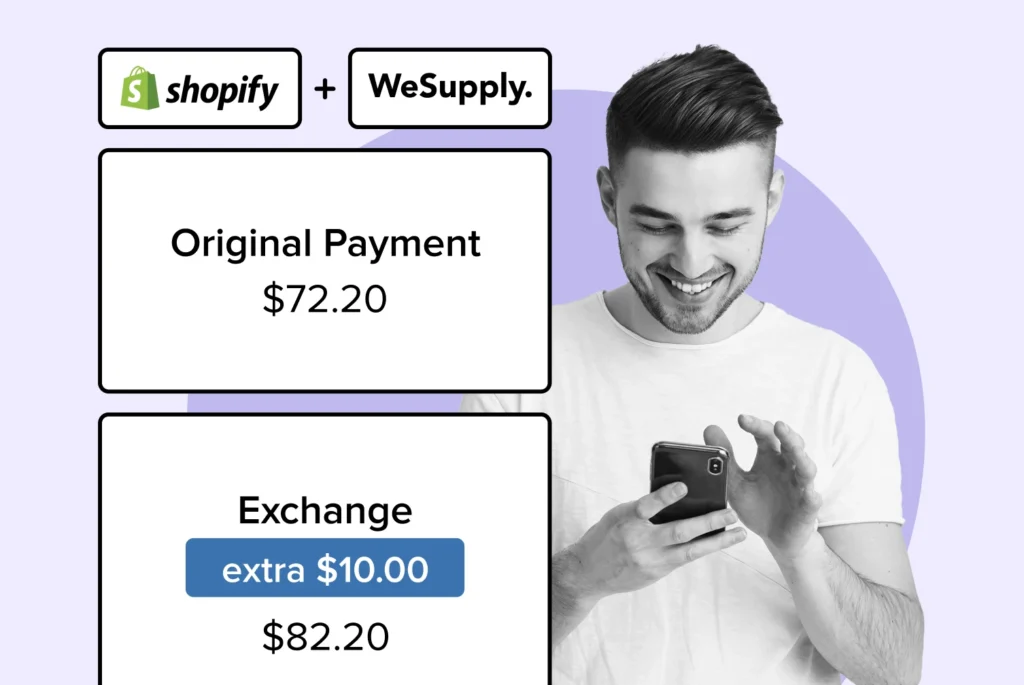
Explore the strategic use of discounts to improve Shopify CLV, the balance between enticing offers and brand value.
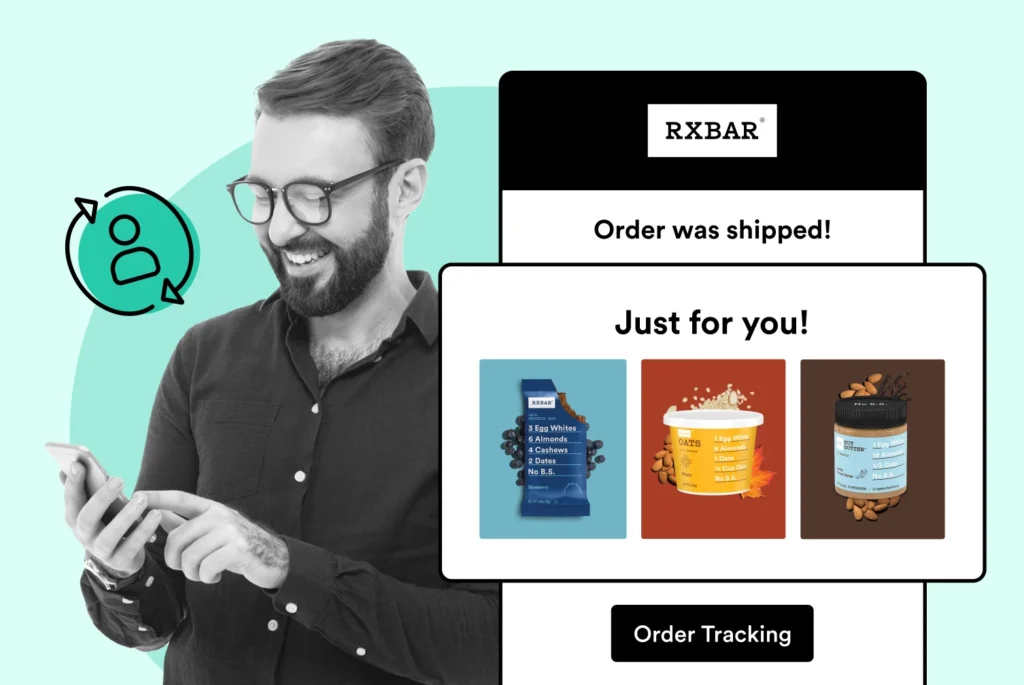
Practical upselling strategies: encourage repeat business & build stronger customer relationships, directly contributing to enhanced customer lifetime value.
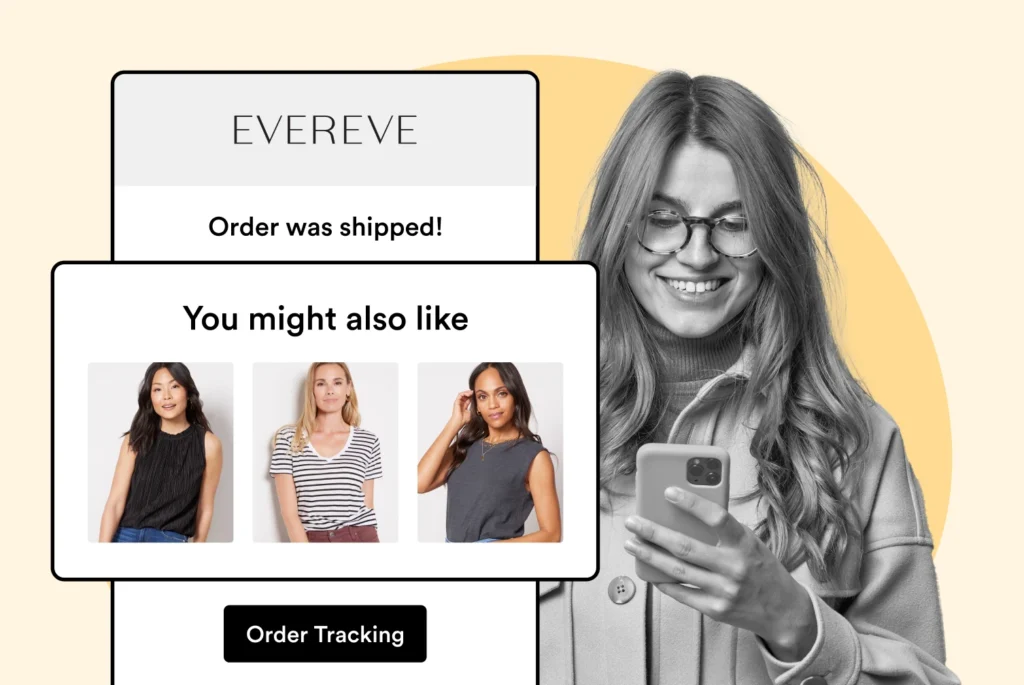
Let’s explore practical strategies to increase your CLV: how to calculate, analyze, and amplify this pivotal metric.
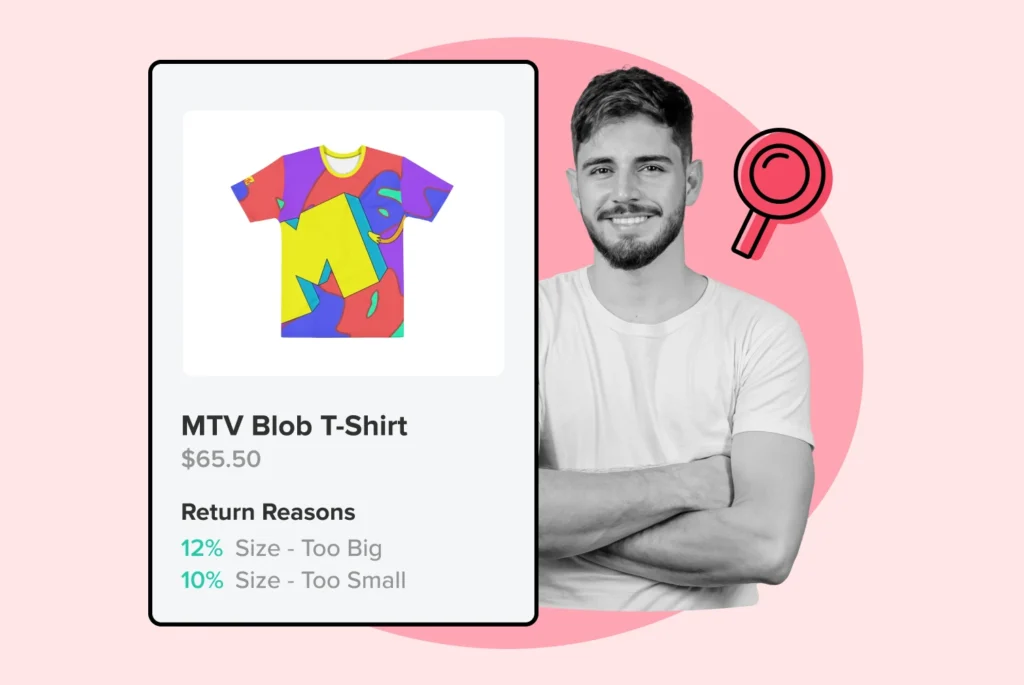
Customer lifetime value (CLTV): Let’s navigate through its calculation & its profound implications for your marketing strategy & bottom line.
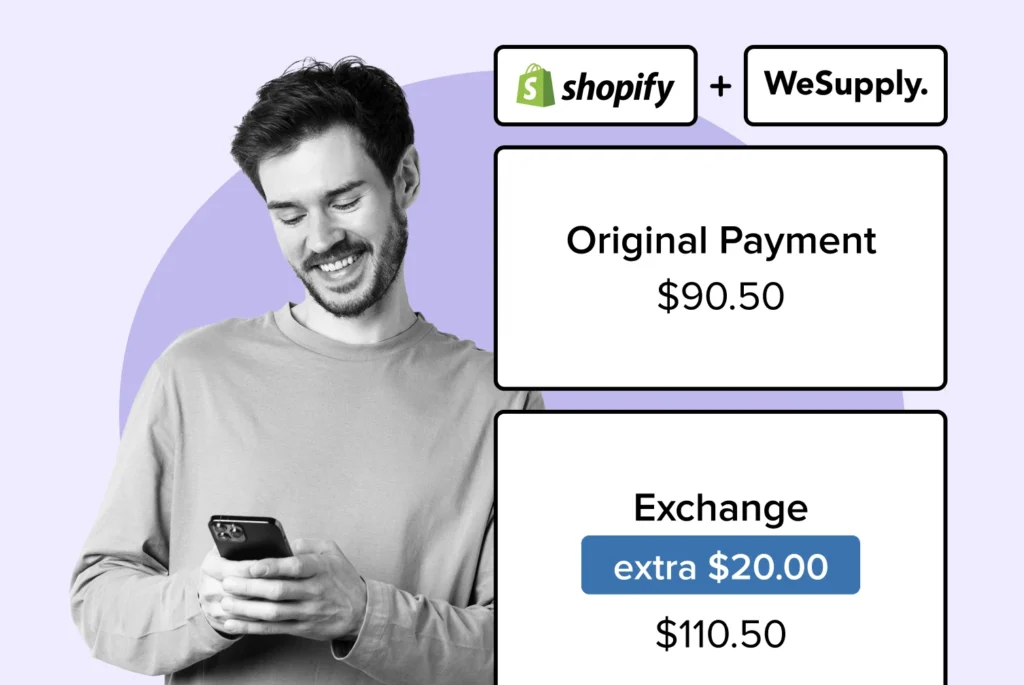
This article dives into the how-to of managing exchanges within your Shopify store, offering practical tactics and key insights.
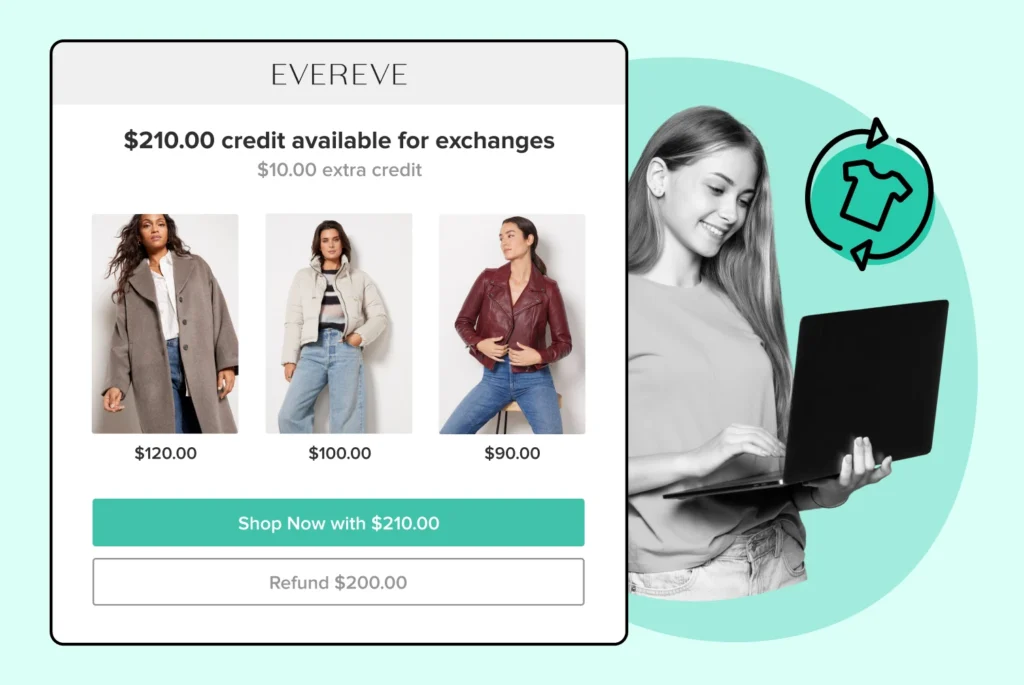
Learn how upgraded exchange processes can reduce costs, conserve resources, and transform customer returns into new purchasing opportunities.
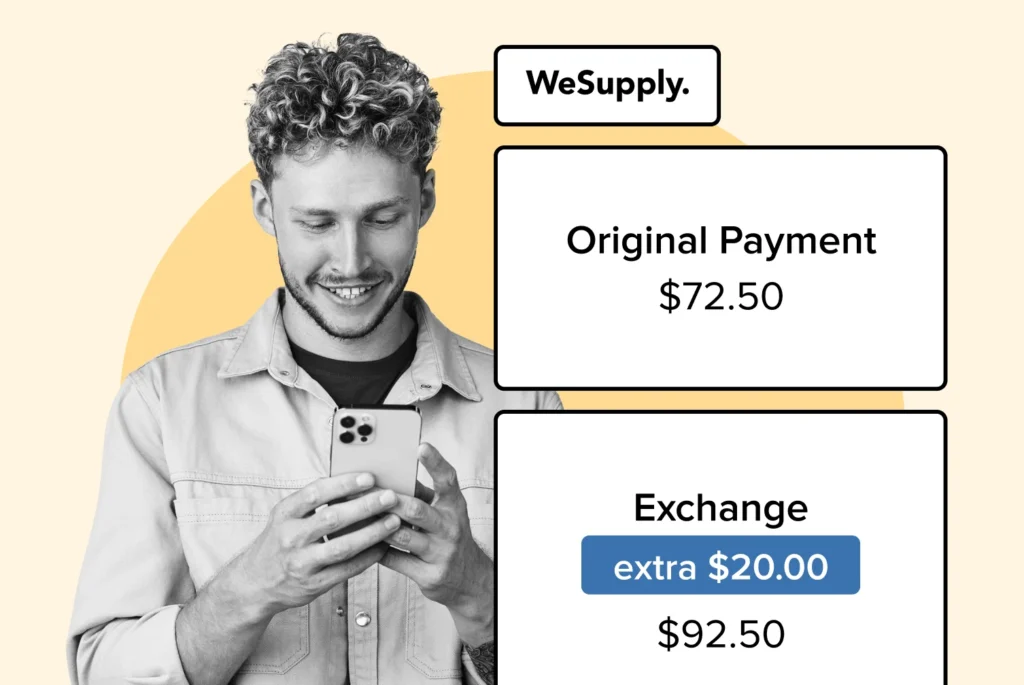
This article lays out proven strategies to optimize your e-commerce exchange policy, reduce return rates, and enhance customer satisfaction.
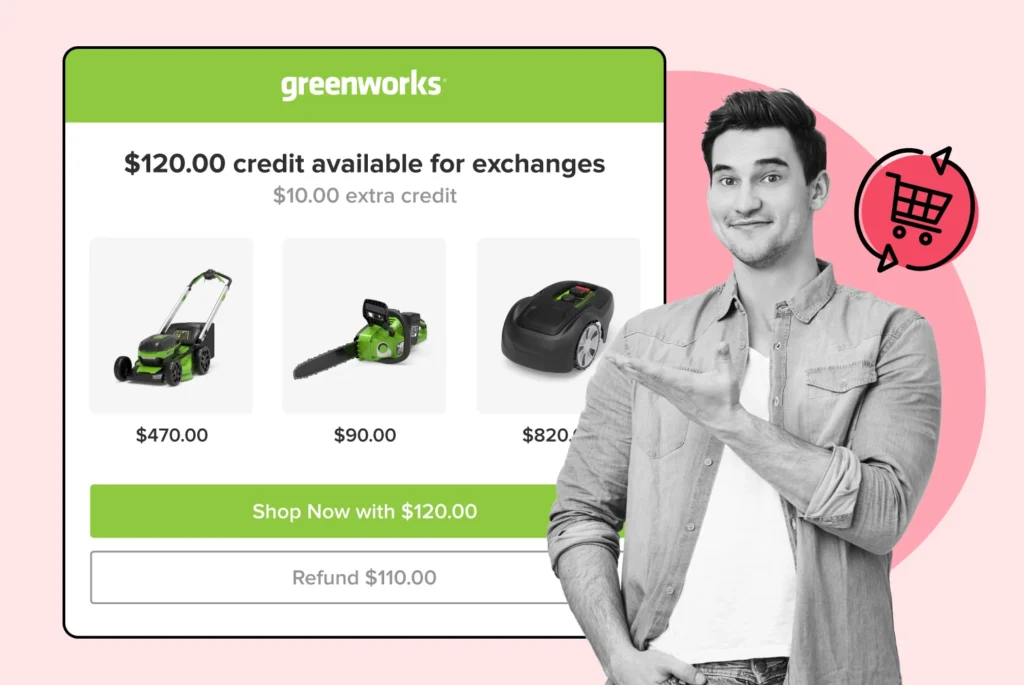
Let’s explore the mechanics, benefits, and integration strategies of instant exchange systems that can take your business to the next level.